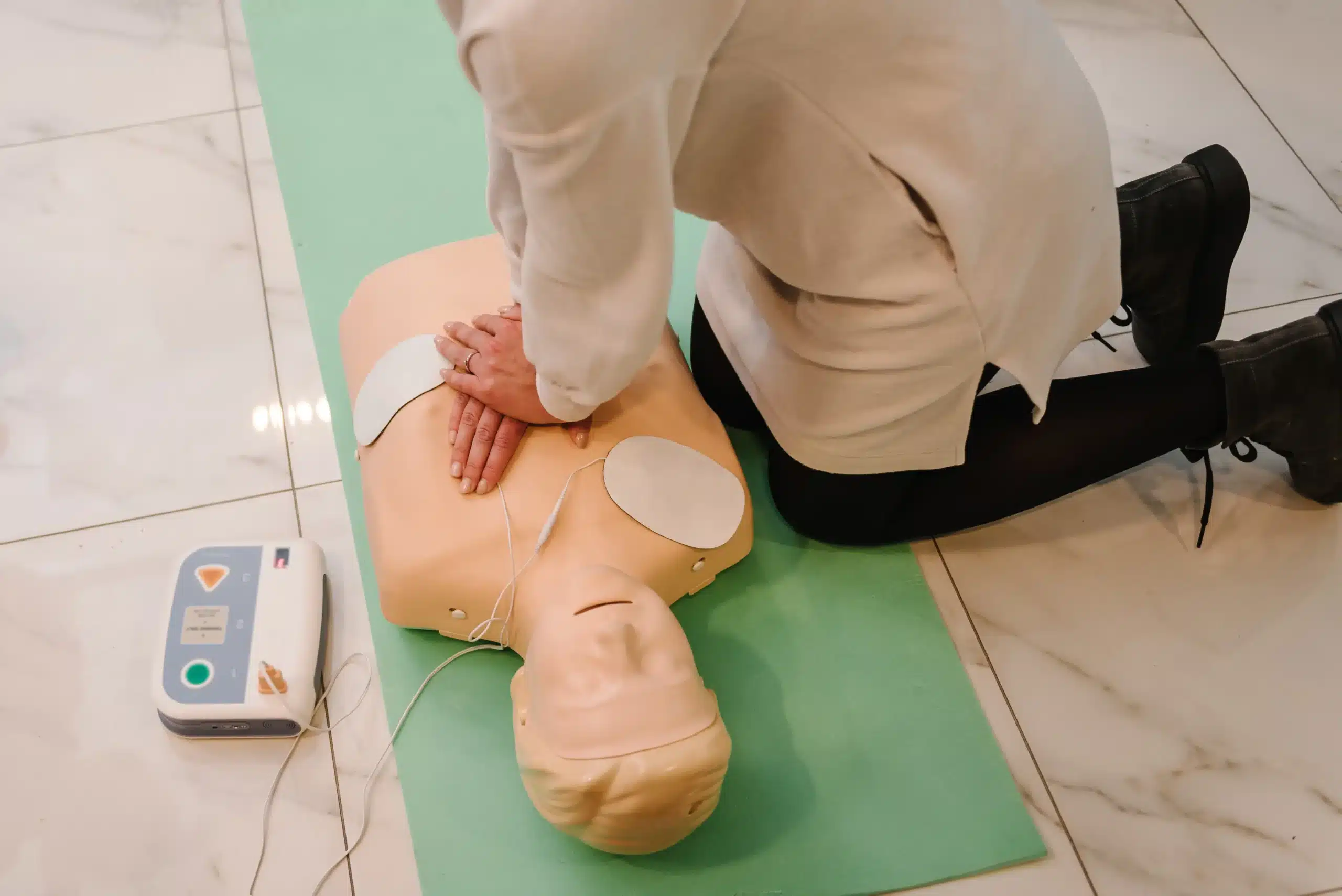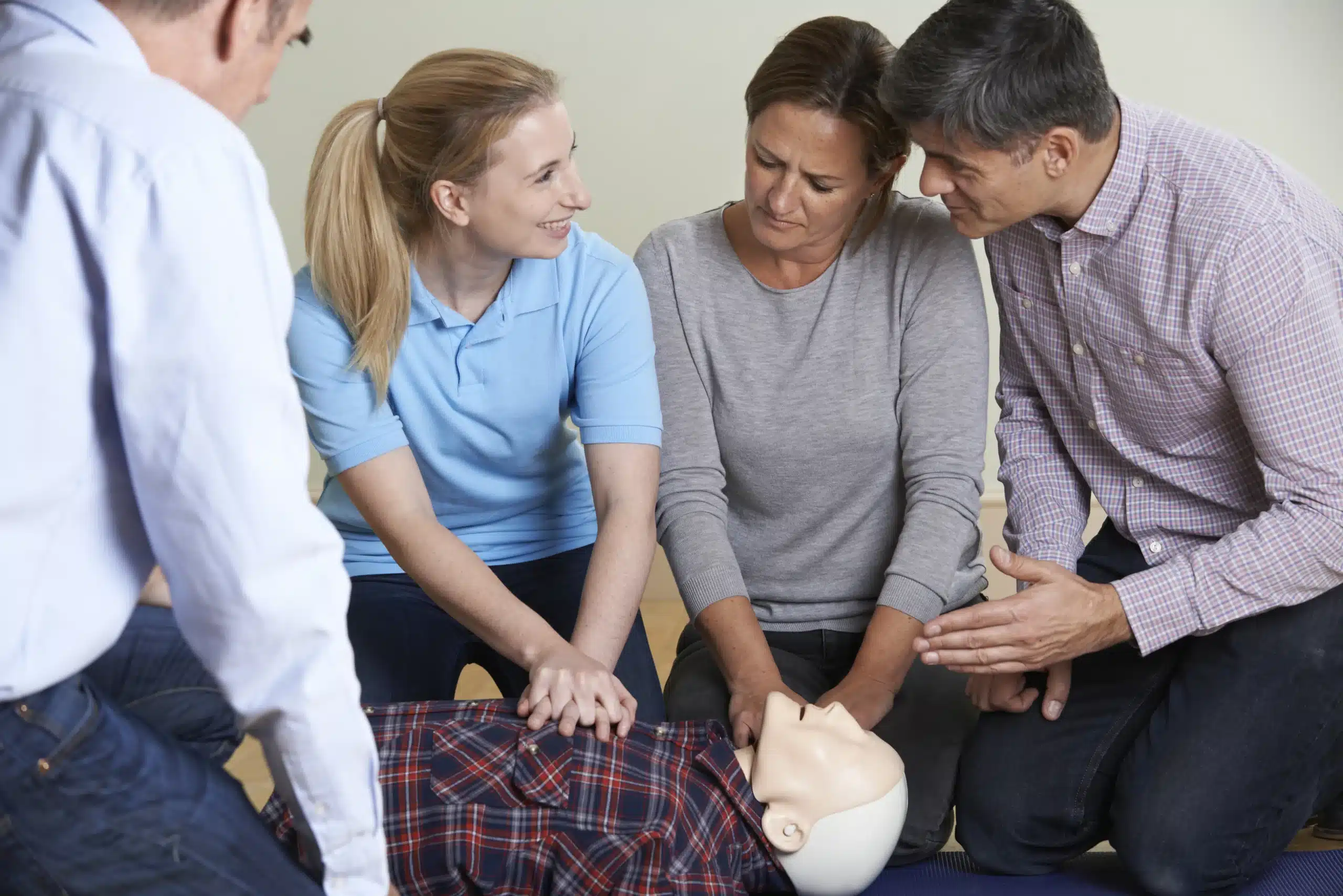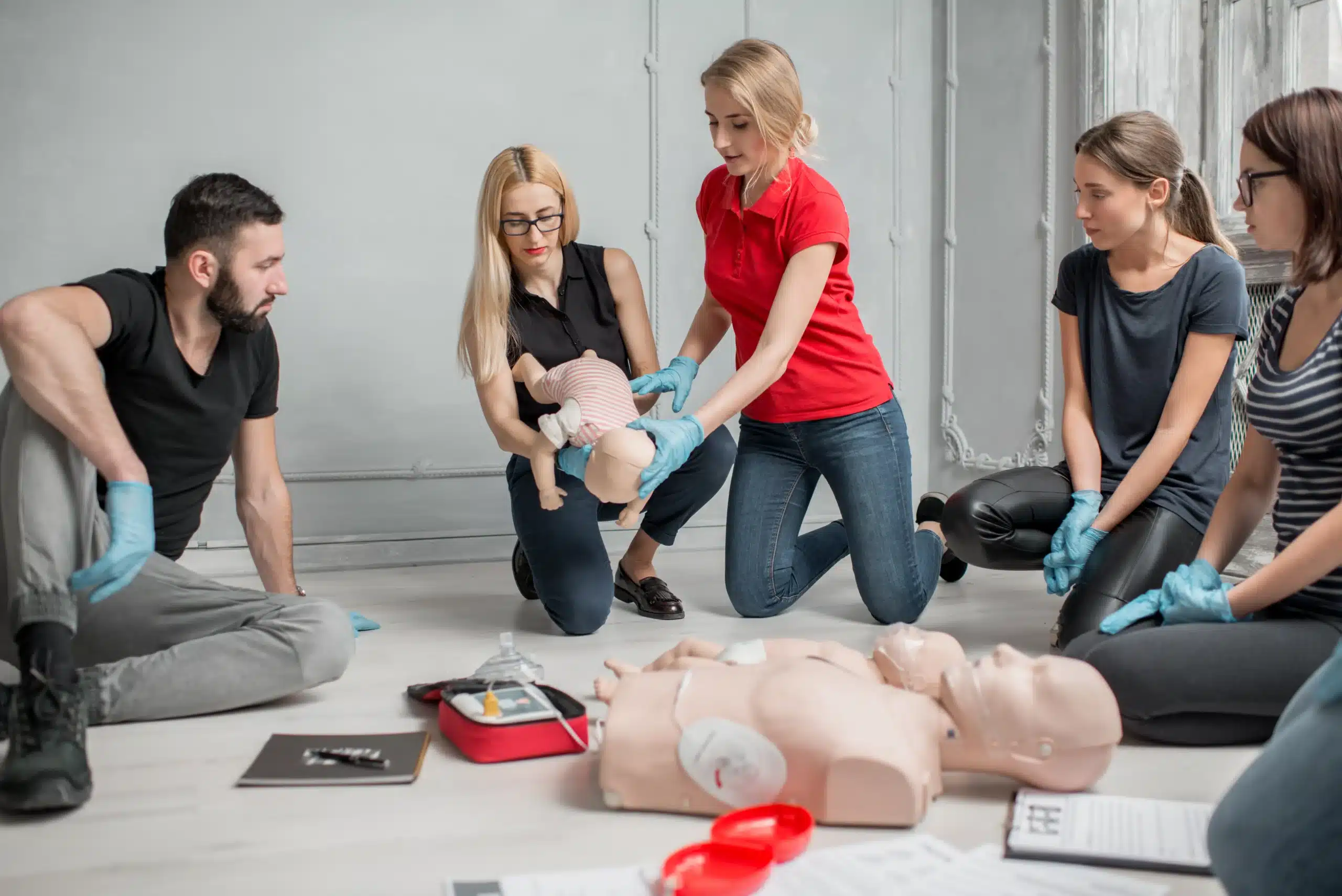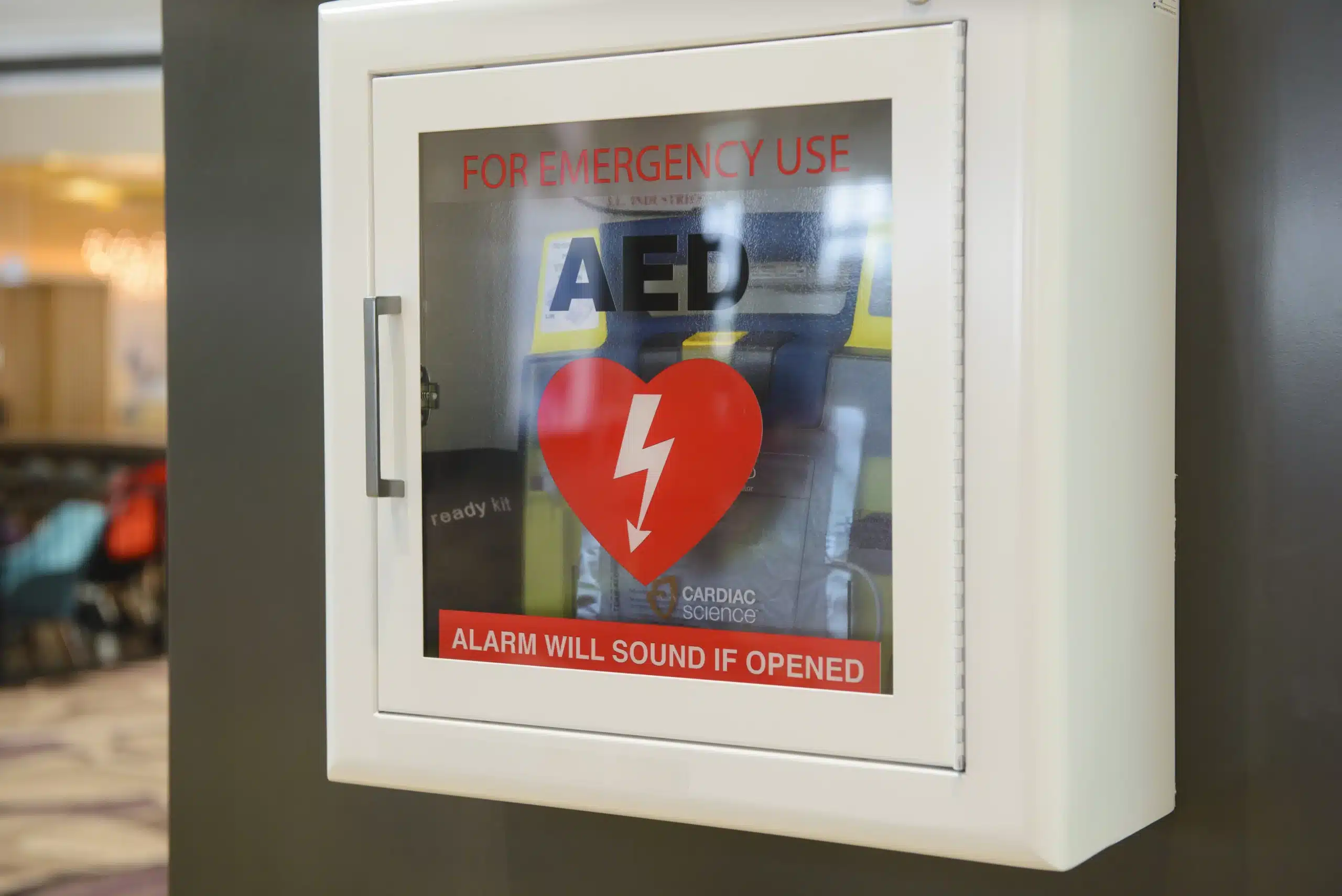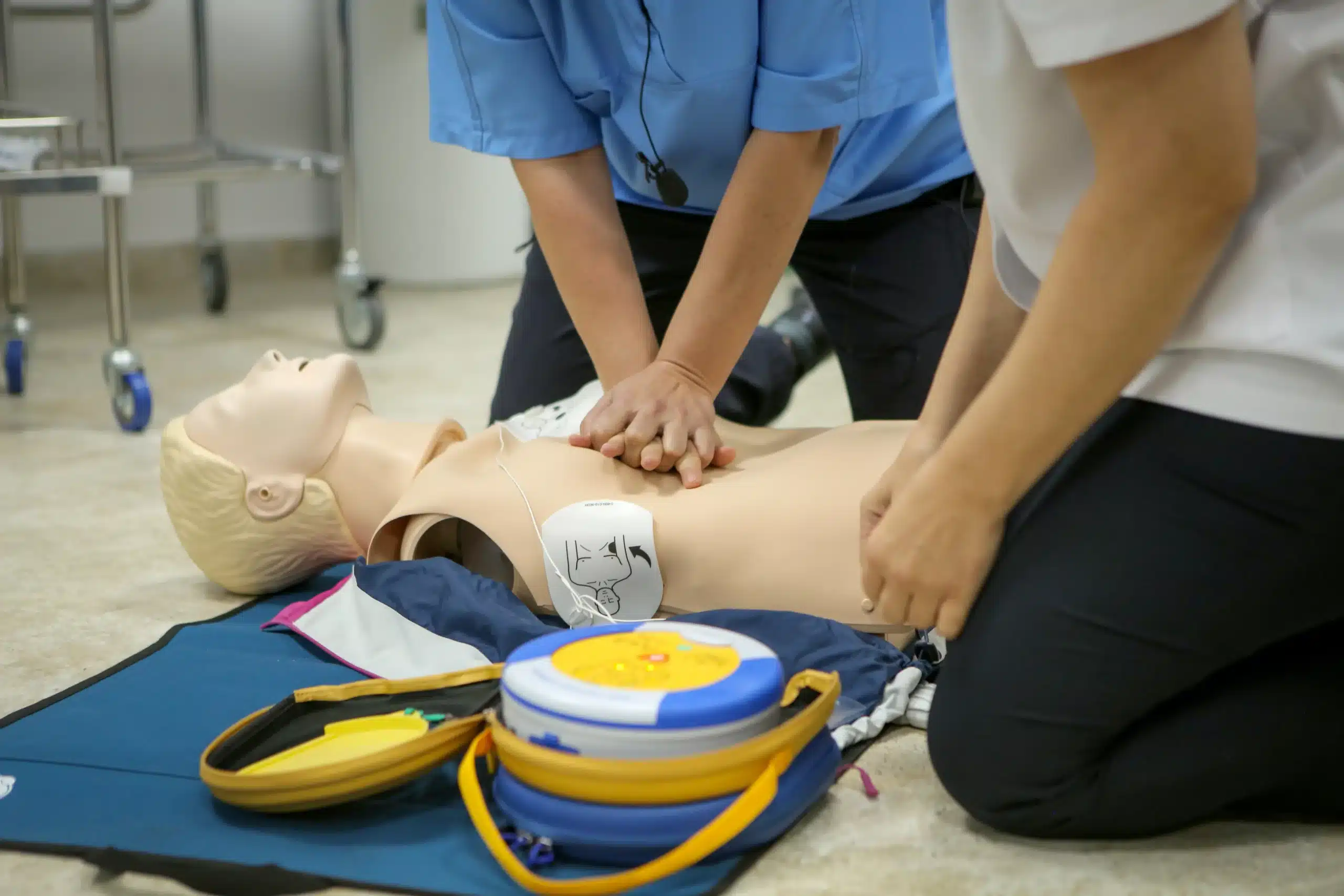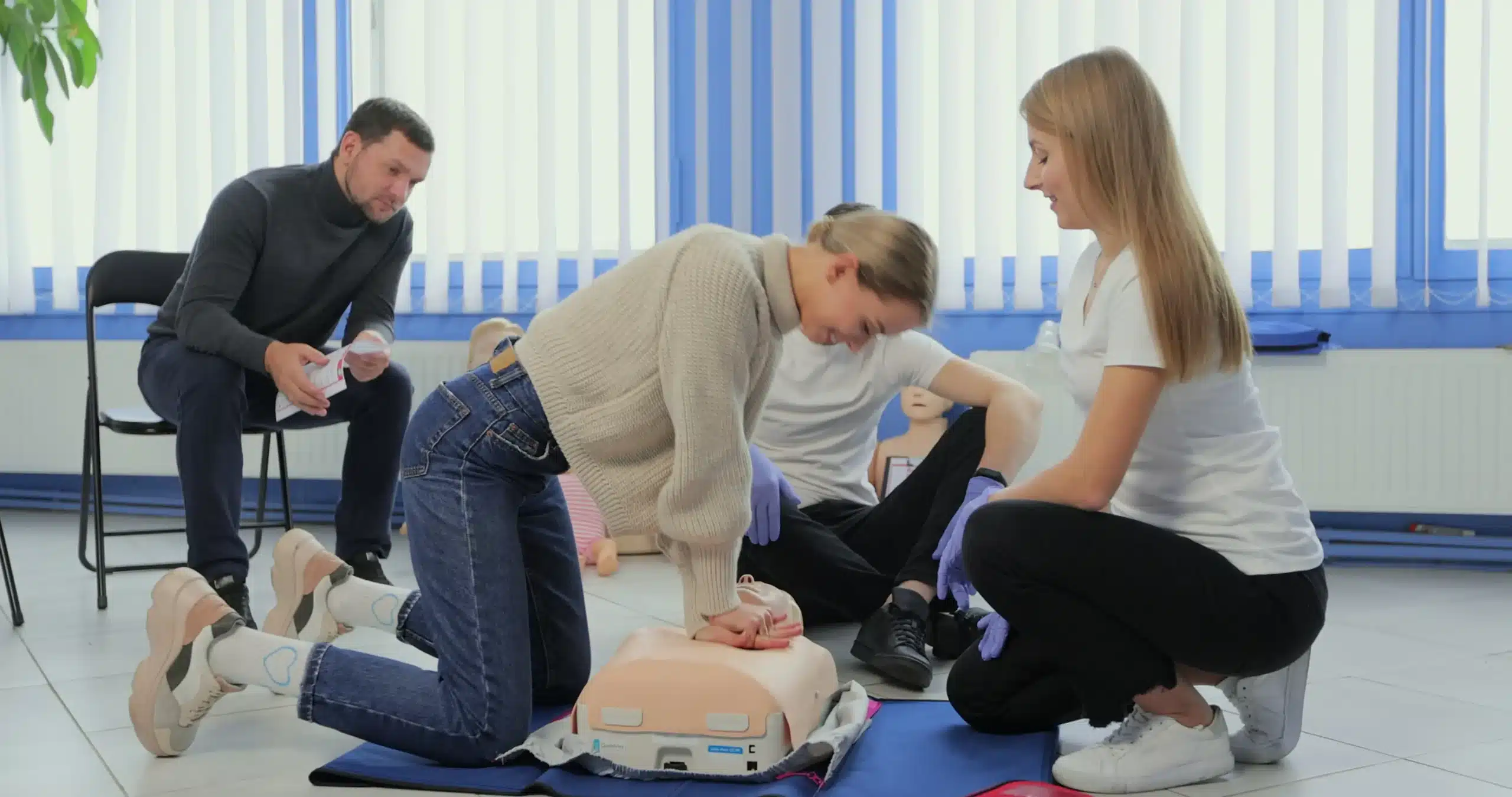Are you a healthcare provider in Davis seeking to enhance your pediatric emergency response skills? PALS HeartCode training offers a dynamic blend of online learning and hands-on practice, making it a convenient and effective way to gain essential life-saving certifications. This article explores the ins and outs of PALS HeartCode, from course components and prerequisites to finding training in Davis and preparing for success. We’ll also delve into the advantages of this blended learning approach and how it can benefit your professional development in the healthcare field. Whether you’re a seasoned professional or just starting your career, understanding the value of PALS HeartCode is crucial for providing the best possible care to young patients.
Key Takeaways
- PALS HeartCode blends online learning with hands-on skills: Study the course material at your own pace online, then demonstrate your skills in a practical, in-person session.
- This training is essential for healthcare professionals working with children: The course empowers you to respond effectively to pediatric emergencies, improving the quality of care you provide.
- Find convenient PALS HeartCode training in your area: Woodland CPR Classes offers accessible courses in Davis, Woodland, and Sacramento, making it easier to get certified.
What is PALS HeartCode?
What is PALS HeartCode and who needs it?
PALS HeartCode is a blended learning course that combines online instruction with hands-on skills practice. It’s designed to equip healthcare providers with the knowledge and skills they need to respond to pediatric emergencies. Think of it as a crucial toolkit for anyone regularly caring for infants and children. This includes doctors, nurses, paramedics, respiratory therapists, and other healthcare professionals working in emergency departments, intensive care units, and other critical care settings. If your role involves the potential for pediatric emergencies, PALS HeartCode certification is often a requirement. Woodland CPR Classes offers this important training.
Course components and structure
The PALS HeartCode course consists of two main parts. You’ll begin with the self-directed online portion, which you can complete at your own pace. This interactive program uses simulations and case studies to teach essential concepts and decision-making skills. After finishing the online portion, you’ll attend an in-person skills session with an American Heart Association (AHA) certified instructor. This session focuses on practicing essential skills like CPR, airway management, and vascular access.
Duration, cost, and certification
The online portion of PALS HeartCode typically takes between four to six hours to complete, though you can move at your own speed. The in-person skills session and testing usually lasts a few hours. The total cost for the PALS HeartCode course, including both the online and in-person components, varies. Check with your chosen training center, like Woodland CPR Classes, for specific pricing. Upon successful completion of both portions, you’ll receive your PALS provider card, valid for two years. This certification demonstrates your commitment to providing high-quality care for young patients.
Find PALS HeartCode Training in Davis
If you’re looking for PALS HeartCode training in Davis, you’ve come to the right place. Davis, along with nearby Woodland and Sacramento, offers several options for high-quality PALS certification. Let’s explore how to find the right provider for you.
Find Davis training providers
Davis CPR Classes, a woman-owned AHA Training Center, offers a range of American Heart Association courses, including PALS, right here in Davis, CA. They focus on student convenience, offering classes seven days a week in Davis and surrounding cities. This flexible approach makes fitting training into your busy schedule that much easier.
Woodland CPR Classes PALS HeartCode courses
Davis CPR Classes also extends its services to Woodland and Sacramento, providing accessible, high-quality training throughout the region. They feature AHA-certified courses, flexible scheduling, a low price guarantee, and the RQI program for easy recertification. Their course catalog includes BLS, ACLS, and PALS.
Scheduling and availability
PALS classes are available every day of the week, beginning at 7 a.m. The online portion of the PALS HeartCode course usually takes 3–4 hours to finish. The required in-person skills check takes an additional 30–40 minutes and can be conveniently scheduled at one of over 60 testing sites. This blended learning format lets you study online at your own speed before demonstrating your skills to a certified instructor.
Learn PALS HeartCode
Online Learning and Simulations
The PALS HeartCode course blends online learning with realistic simulations, offering a flexible and engaging way to build essential skills. This online portion lets you learn at your own pace, revisiting modules as needed. The program uses interactive simulations of pediatric emergencies, giving you a safe space to practice your responses and decision-making. You’ll receive immediate feedback after each simulation, helping you refine your approach and understand the impact of your actions. This web-based learning makes the information accessible and convenient, fitting easily into your schedule.
Hands-on Skills Assessment
After completing the online PALS HeartCode training, you’ll move on to a hands-on skills session. This part focuses on demonstrating your proficiency in core life-saving techniques. You’ll be evaluated on your child and infant Basic Life Support (BLS) skills, ensuring you can effectively perform CPR and other essential procedures. The skills session also includes practice and participation in three key learning stations: Respiratory, Rhythm Disturbances, and Vascular Access. While testing on these case scenarios may be optional depending on the provider, practicing these skills is crucial. This hands-on component ensures you’re fully prepared to handle pediatric emergencies.
Skills and Knowledge You’ll Gain
The PALS HeartCode course equips healthcare providers with the skills and knowledge to effectively manage life-threatening situations in infants and children. You’ll learn to recognize and respond to respiratory emergencies, shock, and cardiopulmonary arrest. The training emphasizes high-performance team dynamics, teaching you how to work effectively within a team to deliver the best possible care. Beyond technical skills, PALS HeartCode instills the importance of high-quality individual skills, empowering you to make quick, informed decisions under pressure. Ultimately, the PALS course aims to improve patient outcomes by preparing providers to act swiftly and confidently in critical situations.
Prepare for PALS HeartCode Success
Getting ready for your PALS HeartCode training? Here’s what you need to know to make the most of your learning experience. We’ll cover the qualifications, materials, and address some common challenges so you can feel confident and prepared.
Prerequisites and Qualifications
Before starting the PALS HeartCode course, a solid foundation in basic life support is essential. You’ll need to be proficient in child and infant BLS. While not mandatory, hands-on practice is highly recommended. Look for opportunities to practice at learning stations that focus on key areas like Respiratory, Rhythm Disturbances, and Vascular Access. This practical experience will reinforce the concepts you learn online. Check with your chosen training center, like Woodland CPR Classes, about available hands-on practice options.
Materials and Resources
The PALS HeartCode course blends online learning with hands-on skills practice. The self-directed online portion adheres to the 2015 AHA Guidelines Update for CPR and ECC. Complete this online component before your in-person skills session to effectively apply your knowledge during the hands-on portion.
Overcome Common Challenges
One common concern is feeling unprepared for the hands-on skills session. The good news is the skills session takes place after you complete the online portion, giving you time to absorb the information and become comfortable with the concepts before practicing. Instructors are required to complete the 2020 AHA Guidelines Instructor Update for PALS, ensuring you learn from someone up-to-date on the latest guidelines and best practices. If you have any questions, reach out to your instructor or training center for support.
Benefits of PALS HeartCode Training
Online vs. traditional PALS HeartCode
PALS HeartCode blends online learning with hands-on practice, offering a flexible approach to pediatric advanced life support training. The online portion lets you learn at your own pace, using interactive simulations to practice critical thinking and decision-making skills in a safe environment. This self-paced learning is a major advantage over traditional classroom-based PALS courses, fitting easily into busy schedules. The online portion typically takes between six and nine hours to complete, depending on your existing knowledge and experience. Check out the Children’s Hospital of Philadelphia website for more information on the benefits of web-based learning. Once you finish the online modules, you’ll schedule a hands-on skills session with an AHA Training Center like Woodland CPR Classes to demonstrate your proficiency. This blended format combines the convenience of online learning with the essential hands-on practice needed to confidently respond to real-life pediatric emergencies.
Importance for healthcare roles
PALS certification is a vital credential for many healthcare professionals. The skills learned in a PALS course directly translate to improved patient outcomes, particularly in emergencies involving infants and children. From recognizing respiratory distress to managing cardiac arrest, PALS equips providers with the knowledge and confidence to act decisively. The American Heart Association emphasizes the importance of high-performance team dynamics and high-quality individual skills in their PALS Course Options description, highlighting PALS’ critical role in effective interventions. Whether you’re a doctor, nurse, or other healthcare provider working with young patients, PALS certification demonstrates your commitment to providing the highest standard of care. Project Heartbeat offers helpful resources for those pursuing PALS certification. It can also be a valuable asset when applying for jobs or seeking career advancement.
Continuing education and professional growth
PALS HeartCode isn’t just about initial certification; it’s also a valuable tool for continuing education and professional development. The curriculum is regularly updated to reflect the latest scientific guidelines from the American Heart Association, ensuring your knowledge and skills remain current. Completing the HeartCode PALS course contributes to your continuing education requirements, demonstrating your commitment to lifelong learning and professional growth in pediatric care. The AHA provides details on the course structure and completion requirements in their PALS Course Options resource. The blended learning format allows you to conveniently refresh your knowledge and skills, fitting continuing education seamlessly into your busy schedule. You can find more information about continuing education credits for HeartCode PALS on the BC3 website.
Related Articles
- BLS HeartCode in Davis: The Complete Guide – Woodland CPR Classes
- AHA PALS Classes in Woodland, CA – Woodland CPR Classes
- HeartCode BLS in Woodland: Your Guide – Woodland CPR Classes
- HeartCode BLS Sacramento: Your Certification Guide – Woodland CPR Classes
- American Heart Association Training: A Complete Guide
Frequently Asked Questions
What exactly does the PALS HeartCode training cover?
PALS HeartCode teaches you the essential skills to respond to life-threatening emergencies in infants and children. It covers a wide range of topics, from recognizing early signs of distress to managing respiratory and cardiac events. The course emphasizes teamwork and effective communication, preparing you to work confidently within a medical team.
How is PALS HeartCode different from a traditional PALS course?
PALS HeartCode blends online learning with in-person skills practice. You’ll complete interactive modules and simulations online at your own pace, then attend a shorter, hands-on session to demonstrate your skills. This flexible format makes it easier to fit the training into your schedule compared to a traditional classroom-based course.
I’m nervous about the skills check. What should I expect?
The skills check focuses on practical application of the concepts you learned online. You’ll demonstrate core skills like CPR and participate in simulated emergency scenarios. Remember, the hands-on session is designed to reinforce your learning, not intimidate you. Your instructor will guide you through the process and provide feedback.
Do I need any prior experience or certifications before taking PALS HeartCode?
You should have a current BLS (Basic Life Support) certification for healthcare providers before starting PALS HeartCode. While prior experience with pediatric patients is helpful, it’s not strictly required. The course is designed to build upon your existing BLS knowledge and introduce you to advanced pediatric life support techniques.
How long is the PALS HeartCode certification valid, and how do I renew it?
Your PALS provider card is valid for two years. When it’s time to renew, you have options. You can retake the full PALS HeartCode course or choose a renewal course, often shorter and focused on key updates. Check with your training center for renewal options as you approach your expiration date.
